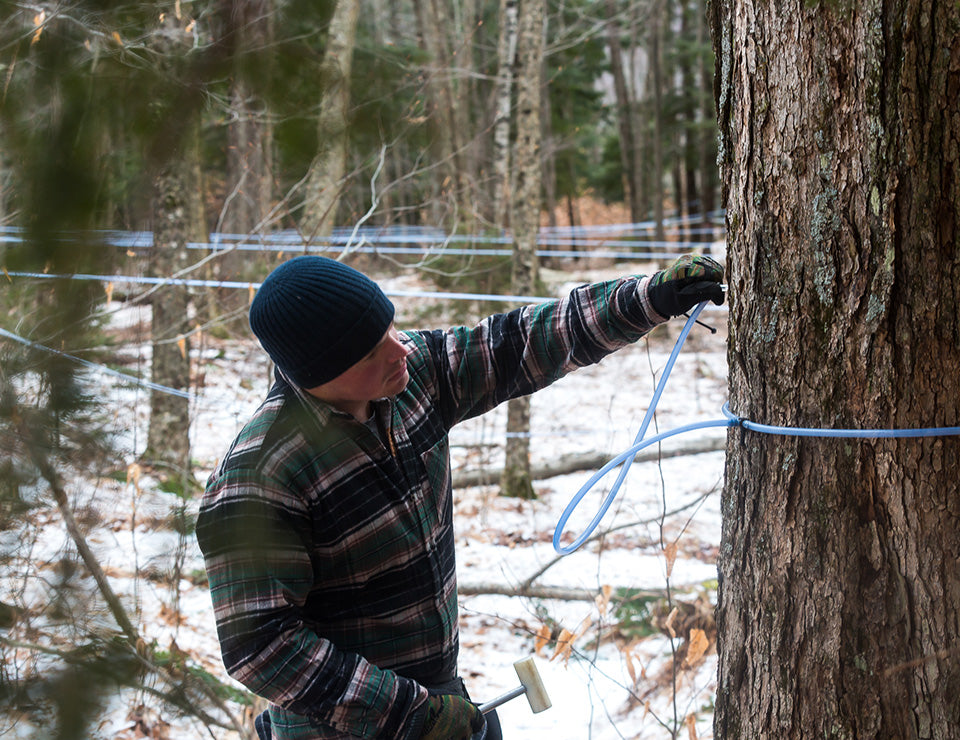
Sugar on Snow
Share
The night was star-filled and cold, the day, above thirty, with a light, what Vermonters call, sugar snow falling. The flakes are large and fluffy and it drifts down, melting almost as quick as it comes. For maple sugaring, these are the best conditions for the highest sap yield. These days, a lot of maple producing places have sap lines that run directly to their sugar house, so going out and collecting bucket by bucket, or strategically placed trough has more or less been rendered a thing of the past, unless it is a smaller scale operation.
My family ran sap the old-fashioned way. My grandfather would trudge through the woods, sometimes waist deep snow, tapping between 150-200 trees. He would then have those lines run to collection points at the edge of fields or along the roads. Then, while he managed the red rickety sugarhouse beneath the copse of cedar trees, his familial helpers for the day, would take his green John Deere out with his hand-made trailer and chug along the roadways, puff through fields until the load was full, then traverse back to the sugar house, to empty the tank, then head back out to collect more.
It takes roughly around 40 gallons of sap, to create one gallon of maple syrup. Sap is clear, and the taste is crisp and sweet. Sap is evaporated and boiled down until the final product is maple syrup. From there it is bottled and then graded corresponding to the color, as the season goes on and before the maple trees bud, the syrup is at its darkest because of the rise in temperature and changing time for the trees.
At this time, when the season for sugaring is winding down, we would gather pans full of snow we’d pack hard. Throughout the day, while my grandfather steamed in the heat of the sugar house, my grandmother would be making donuts, unscrewing caps of sour pickles from last year’s harvest to cut the taste of all the sweet, and around 5:00, when my grandfather would bring up a gallon of Grade A from the day, she would dump it into her largest pot, the one she’d boil garden corn in, for summer barbecues, and begin to boil the syrup again. When the syrup had been boiled to a point in which when a spoonful was dropped into a cup of water and held together, it was ready to be poured across the top of the pans of snow to create the north favorite, “Sugar on Snow.” Donned mostly in flannels and jeans, we would all gather around the table, forks at the ready, and begin twining the syrup around our forks, it wrapped like a loose taffy. When everyone was stuffed with all the sweetness that they could stand, the leftover syrup would be put into smaller containers, and the children would get to mix them until they took on the light brown color and even thicker texture of maple butter.
Spring is a busy time in Vermont, a time of business, family and creation. It is a season, arguably, the famous fifth season known to Vermonters as “Mud Season,” that has been part of Vermont for generations, and I am sure will be for generations to come. As with all things of Vermont, if you haven’t yet, go handcrafted.
